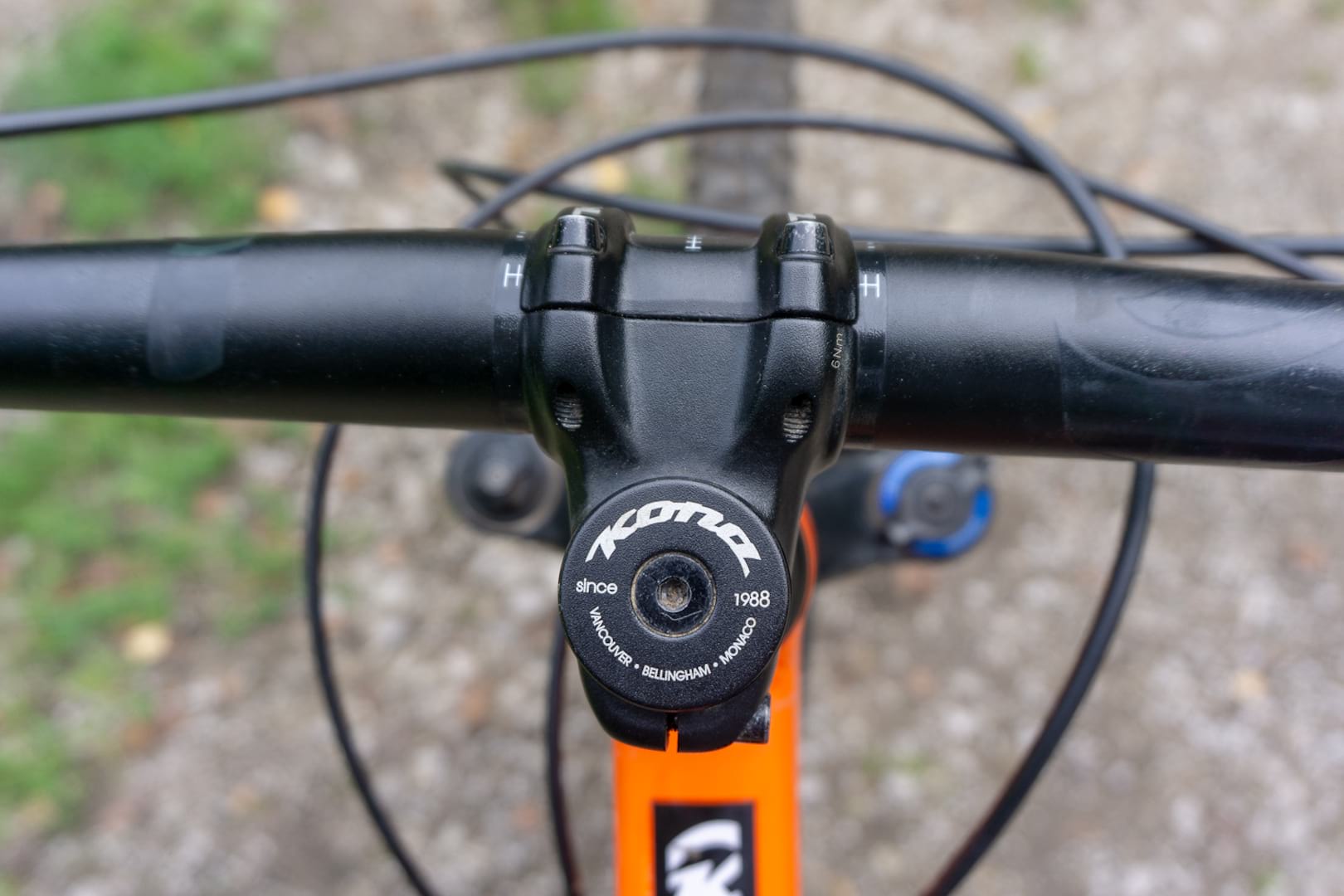The Satori is a bike that’s returned to Kona’s lineup after a lengthy leave of absence. It was originally released back in 2012 when longer travel 29ers were considered a bit outré, and never really found an audience. Returning for 2018, the bike has been fully reworked but has stayed as a 140mm travel 29er. This is quite unusual for Kona, a brand that isn’t afraid to do a bit of chop and change. The Process, which received much love as a short travel 29er at the forefront of the long, low and slack geometry revolution, started out as a 26in freeride bike, while the Hei Hei, which was one of Wil’s favourite bikes of last year, used to be an iconic titanium hardtail.

2019 Kona Satori DL Specifications
- Frame // Kona 6061 Aluminum Butted
- Fork // RockShox Revelation RC Solo Air, 140mm travel
- Shock // RockShox Deluxe RL DebonAir Trunnion, 130mm travel
- Hubs // Unbranded
- Rims // WTB STP i29 TCS
- Tyres // Maxxis Minion DHF TR DUAL 29×2.3, Maxxis Tomahawk TR DUAL 29×2.3
- Chainset // SRAM Descendant 6K
- Rear Mech // SRAM GX Eagle, 12-Speed
- Shifter // SRAM GX Eagle, 12-Speed
- Cassette // SRAM GX Eagle, 12-Speed, 10-50t
- Brakes // SRAM Guide R, 180mm front / 160mm rear rotors
- Stem // Kona XC/BC 35
- Bar // Kona 35mm, 760mm width
- Grips // Kona lock-on
- Seatpost // RockShox Reverb, 125mm travel
- Saddle // WTB Volt
- Size Tested // Medium
- Sizes Available // Small, Medium, Large & XL
- Confirmed Weight // 14.33 kg (31.6 lbs)
- RRP // £3,299
The Bike
I approached this review with interest, because the Satori is very much the sort of bike I’d be looking to buy for myself. There’s an expansive middle ground between lightweight XC racer and full-on trail smasher. I don’t really need a full-on enduro bike – I’d never get near its limits unless someone cut the brake hoses – but I’ll take a bike that can deal with rougher trails competently over one that gets you to the top of a climb faster, and that’s where Kona seems to be pitching the Satori. With burly 35mm stanchion Rock Shox Revelation forks up front, chunky tyres, and a frame shape that harks back to Kona’s freeride bikes of yore, it’s clearly designed take some punishment. Yet the middling head and steep seat angle invite you to gobble up some miles or have a crack at that technical climb that always defeated you. A kickboxer who does the odd marathon on the side.
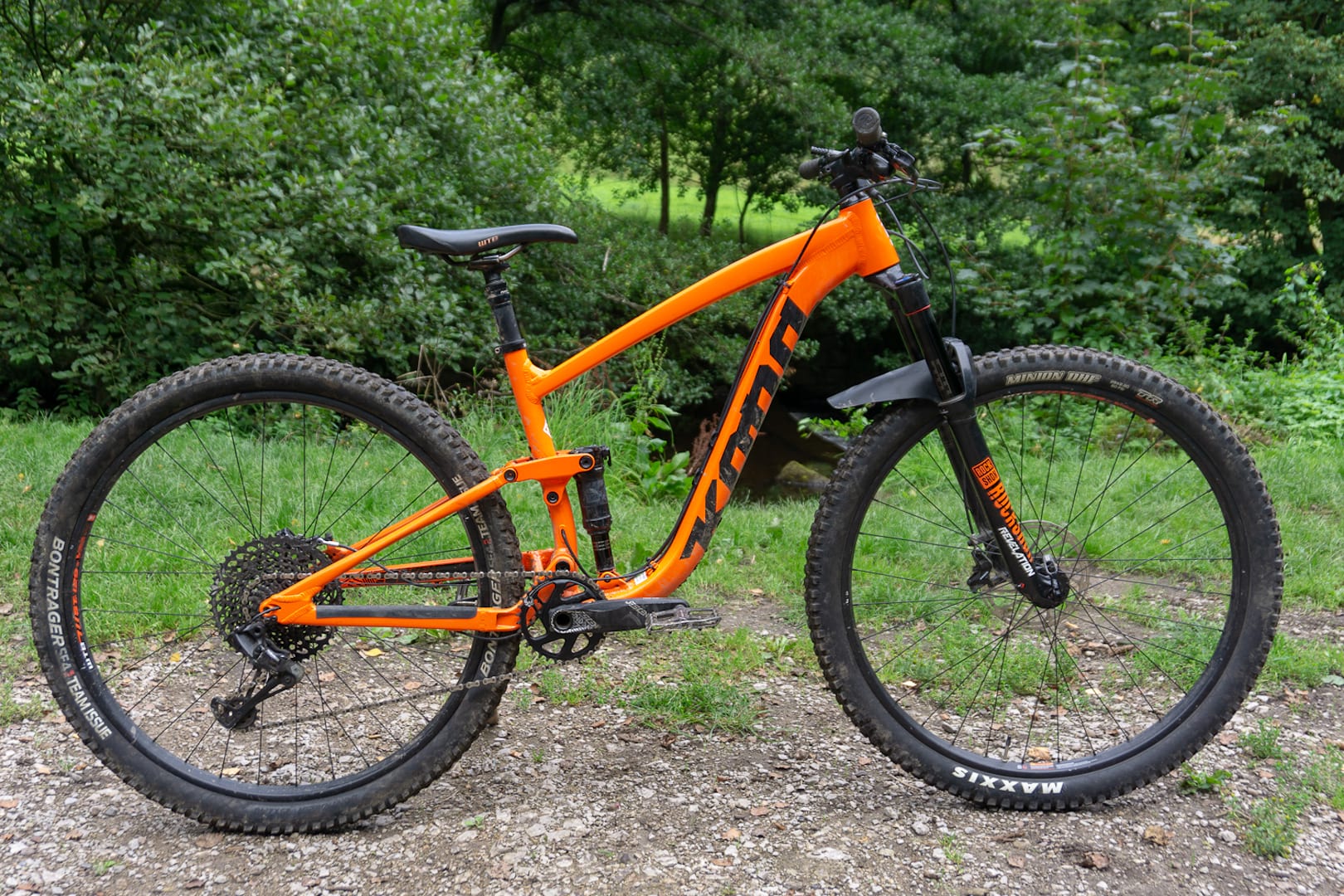
The frame uses fairly conventional tube profiles, with some clever tweaks. The curvy down tube creates a big space in the front triangle, and the external cable guides double as mounting points for a bottle cage (or is it the other way round?). There’s internal cabling at the rear triangle to keep your shifting sweet and annoy your local bike shop, and on that subject, the BB is press fit, but thankfully made to decent enough tolerances that even several months of riding failed to make it groan.
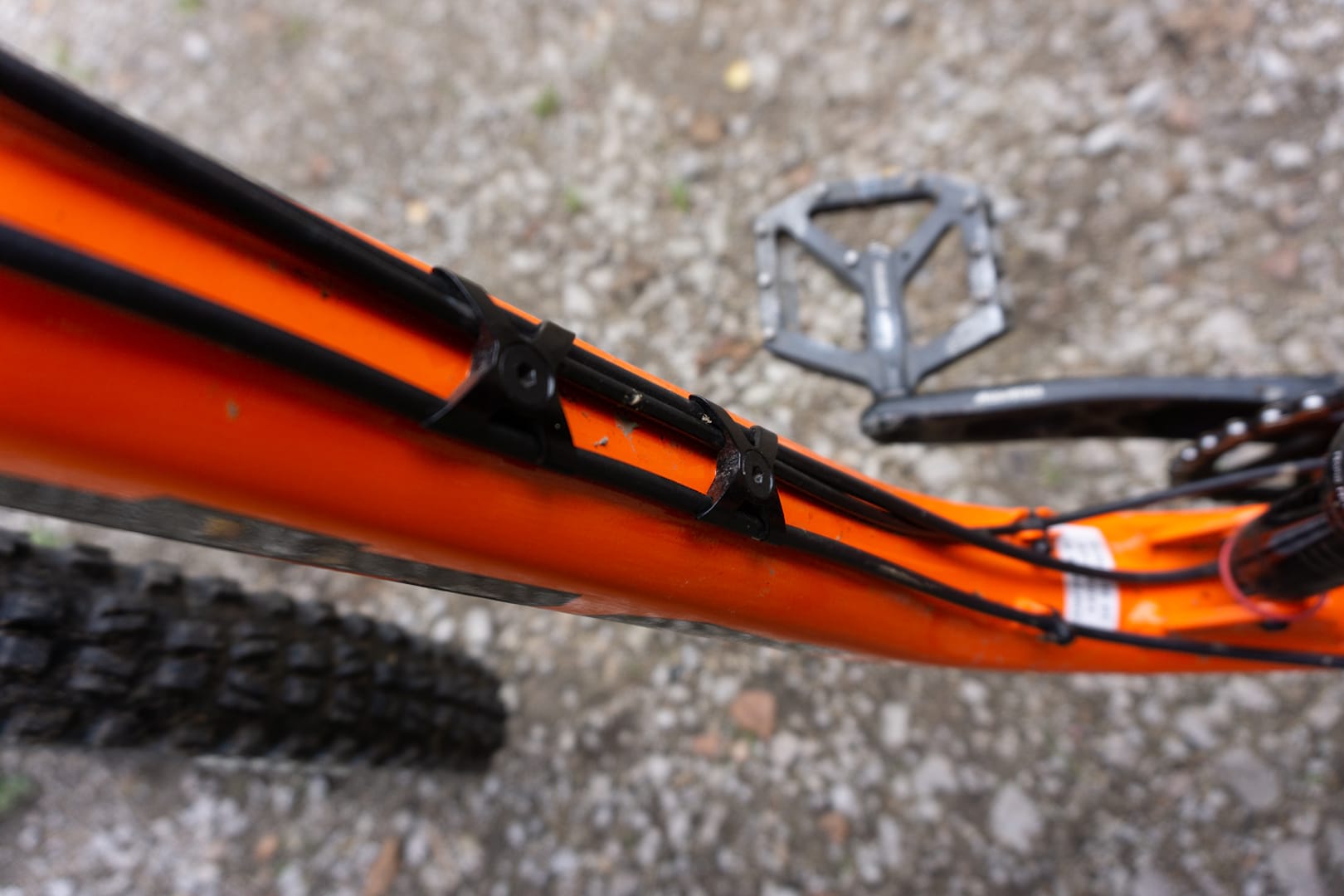
The Rock Shox Monarch rear shock uses the new Trunnion mount, which means the mounting hardware sits inside the shock body, giving it a smidge more air and oil volume. And the asymmetric rear triangle replaces the chainstay pivots with flat section seat stays that function as a virtual pivot. This system, that Kona has dubbed Fuse, has been around for long enough to allay any concerns over reliability, and while the use of flexible stays on a bike with a fair amount of travel might raise an eyebrow, the chainstay pivot does very little of the work on this type of suspension anyway.

For anyone who says frame geometry doesn’t make that much difference, the Satori will be an eye-opener. The 78 degree seat tube angle – that’s steeper than most road bikes – positions you almost directly over the bottom bracket, and shortens the effective top tube length to the point where you’ll feel like you’ve gone down a frame size. The steep seat angle is impossible to ignore, and I suspect it’ll be a love it or hate it feature for many riders. I ended up mostly riding the Satori with flats, as clipping in made me feel like my thighs were constantly tensed. The fact that dropper posts with a layback head are few and far between, and mostly at the expensive end of the scale, make a test-ride a must. The headtube angle, meanwhile, has stayed the same since 2012, although at 68 degrees it suits the bike’s intended purpose as a do-it-all-rounder.
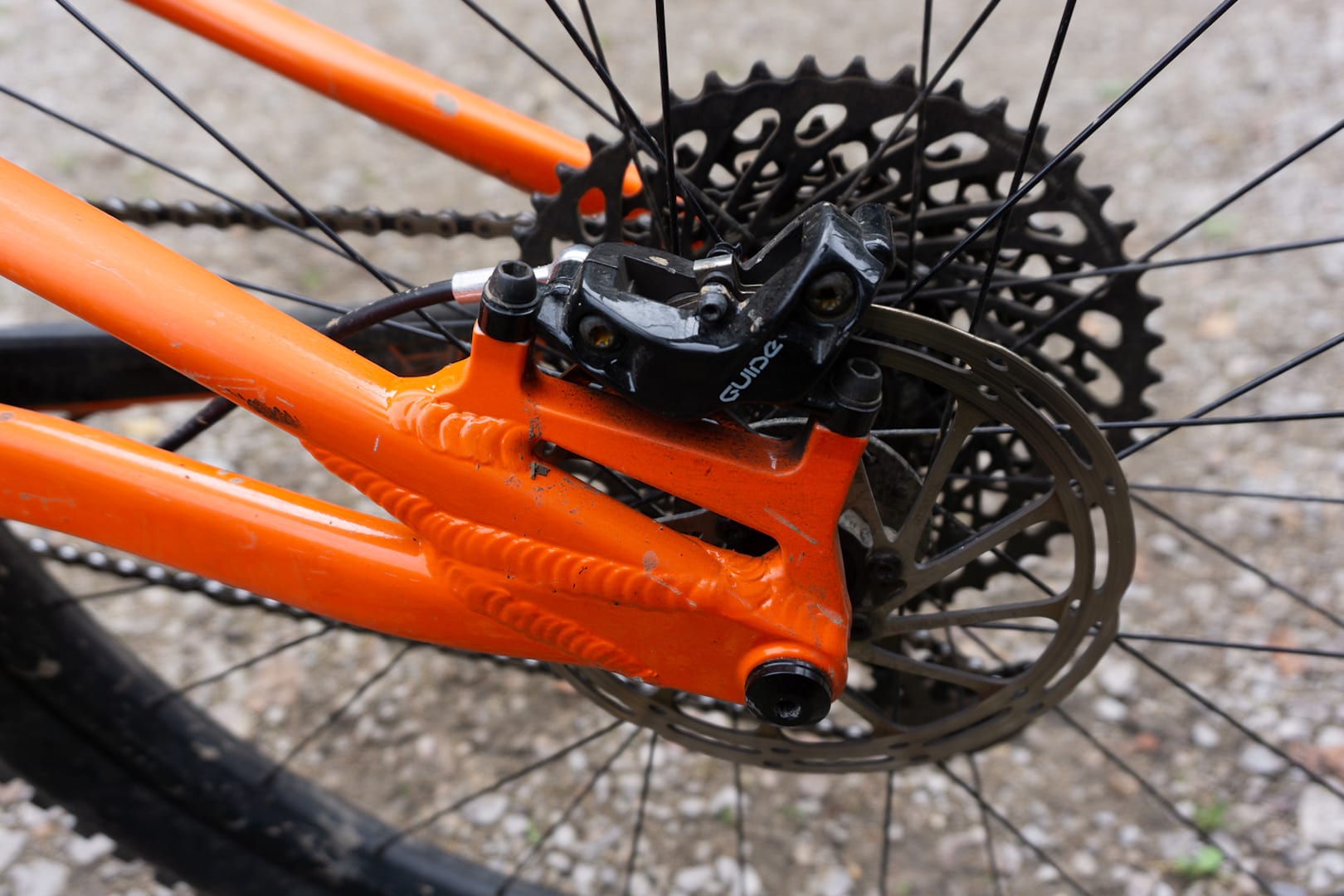
The drivetrain is SRAM GX Eagle, which seems to be the choice for complete bikes at the moment. On the Satori, the 50T cassette comes with a truly mind boggling spoke protector (or “pie plate” if you’re a Bike Snob NYC fan) which does nothing for the aesthetics of the bike, and I removed it as soon as I could. Truvativ Descendant cranks sit towards the budget end of SRAM’s component family, but certainly aren’t a cheap OEM option. I’ve seen some concerns expressed about the 34T ring up front, and for a 29er it does give a fairly tall bottom gear. I wouldn’t say there were times when I needed a lower gear, but the were definitely moments when I wanted one. If you live somewhere with particularly vicious hills you might want to swap down. However it does mean that you’ll put more miles on the bigger sprockets lower down the cluster, instead of wearing out the 14 or 11 tooth and having to buy a costly replacement.

The build kit the bike comes with is standard, unflashy fare. A short stem holds 760mm wide bars and Kona’s own lock-on grips. SRAM’s Guide brakes are decent enough, and have tool-free reach adjust. The Rock Shox Reverb dropper post should be a highlight, but unfortunately it’s only the 125mm drop version, a point which I’ll return to later, and comes equipped with the old-school over-the-bar plunger remote. For me, this type of dropper lever isn’t a deal-breaker, but some other riders may not get on with it at all, and at £90 for a 1x remote upgrade, it’s a bit of a turn-off. There’s even already a mount for an upgraded remote on the brake lever clamp.
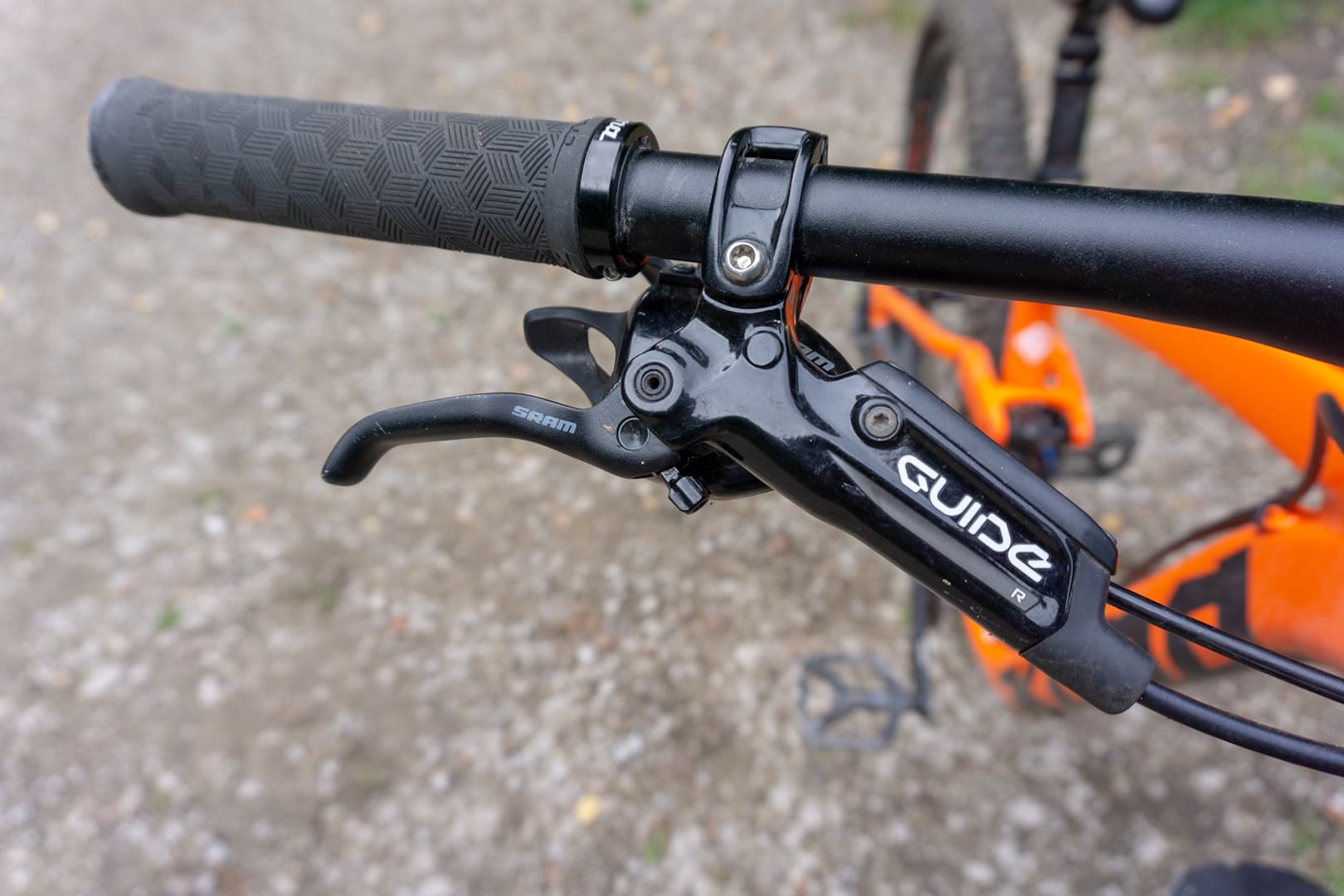
The wheels pair wide, tubeless-ready WTB i29 rims with unbranded cartridge bearing hubs. The frame is Boost spaced (no word on whether it’s 27.5+ compatible, which makes me think it’s not) and the front hub has fat end caps for an extra stiff interface with the fork dropouts.
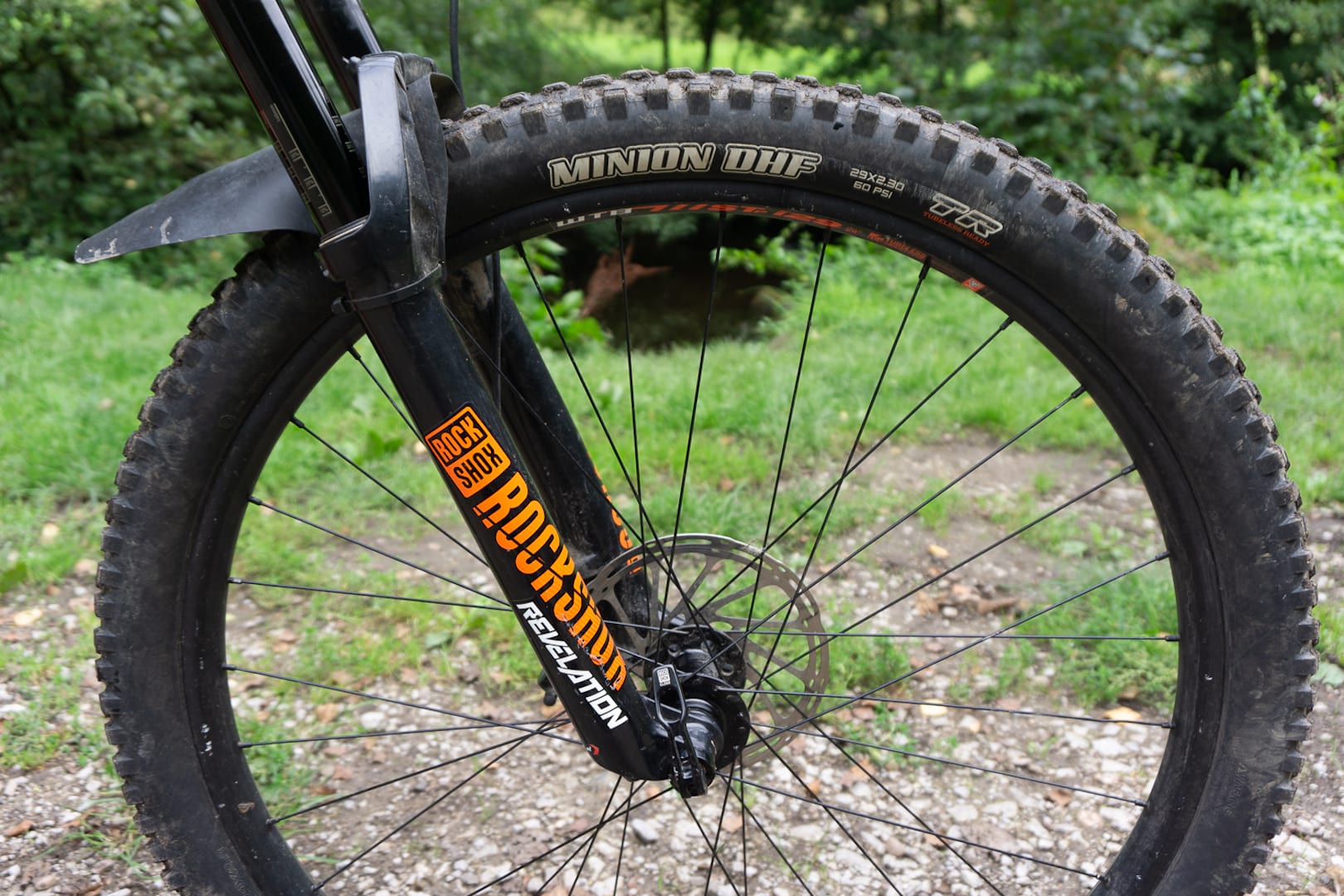
The Maxxis Minion on the front is an absolute classic tyre, and a firm favourite in Yorkshire for its all-conditions cornering ability. The Tomahawk on the rear though suffers from a lack of bite on the climbs, and squirmy sidewalls that rule out any attempt to compensate by dropping the pressure. It’s a bit of a shock when you get a less than great tyre on a test bike these days, and it came as a relief when early on in the testing, I put a tear in the sidewall and rolled it off the rim, which gave me the excuse needed to swap it.
The Ride
While some bikes gobble up the trail like a Labrador eating a birthday cake, the Satori has lively rear suspension that feels like it’s giving back what you’re putting in. It’s not as active as some designs, and it can get a bit chattery once you’re up to speed, but it copes fine with awkward lumps (a description that here might apply equally to the trail and the rider).
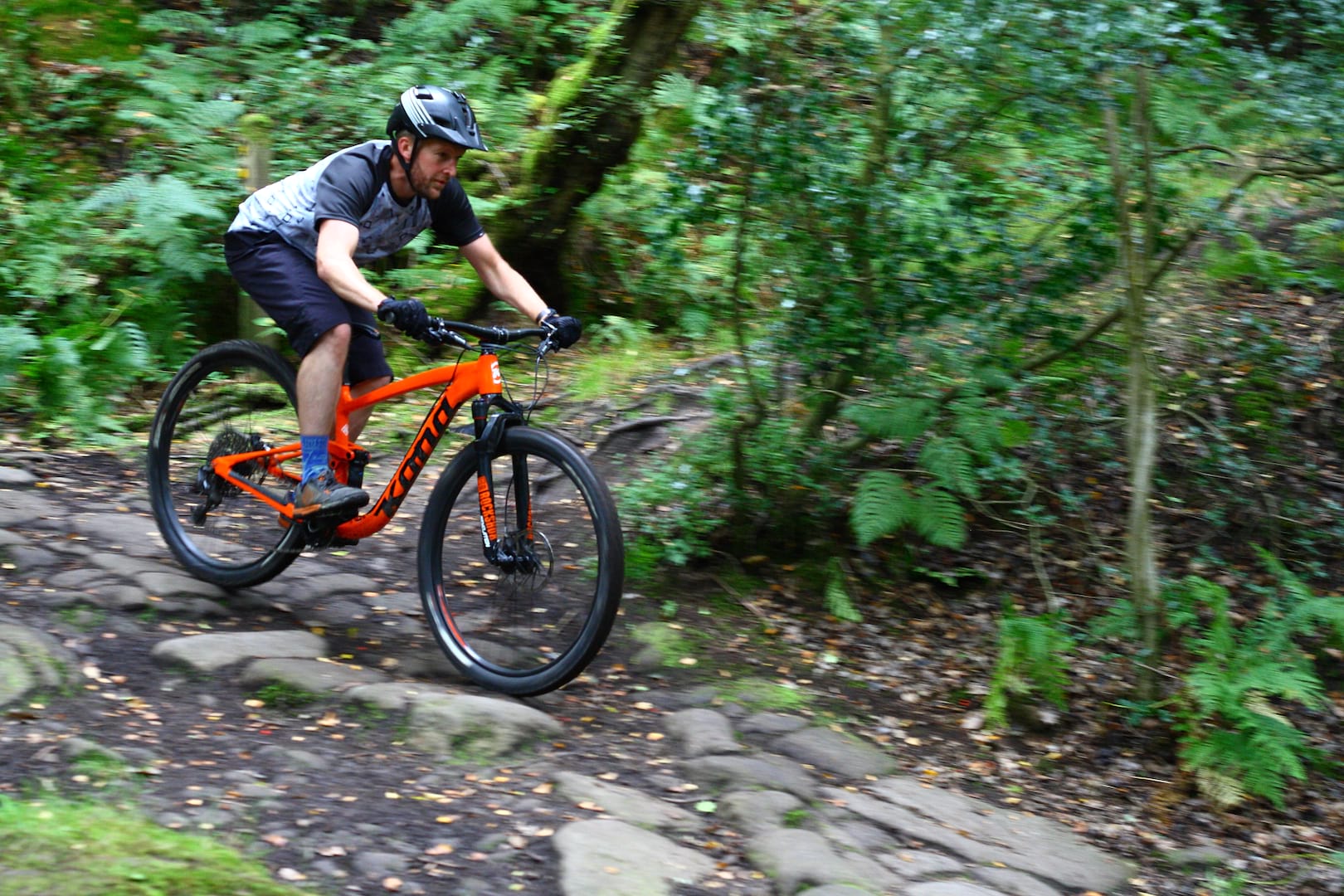
As you might expect, the Satori is rather good on tricky technical climbs, and the steep seat angle, huge gear range and generous BB height mean it’s possible to get up all sorts of horrendousness, with very little rider input other than pushing the pedals. On more challenging downhill trails, the Satori is capable but not entirely comfortable. The combination of 125mm dropper post and audacious seat angle are a bit of a problem on the steep stuff, as the saddle always seems to be in the way. And the rear suspension, while efficient, definitely doesn’t cosset you as much as some bikes do.
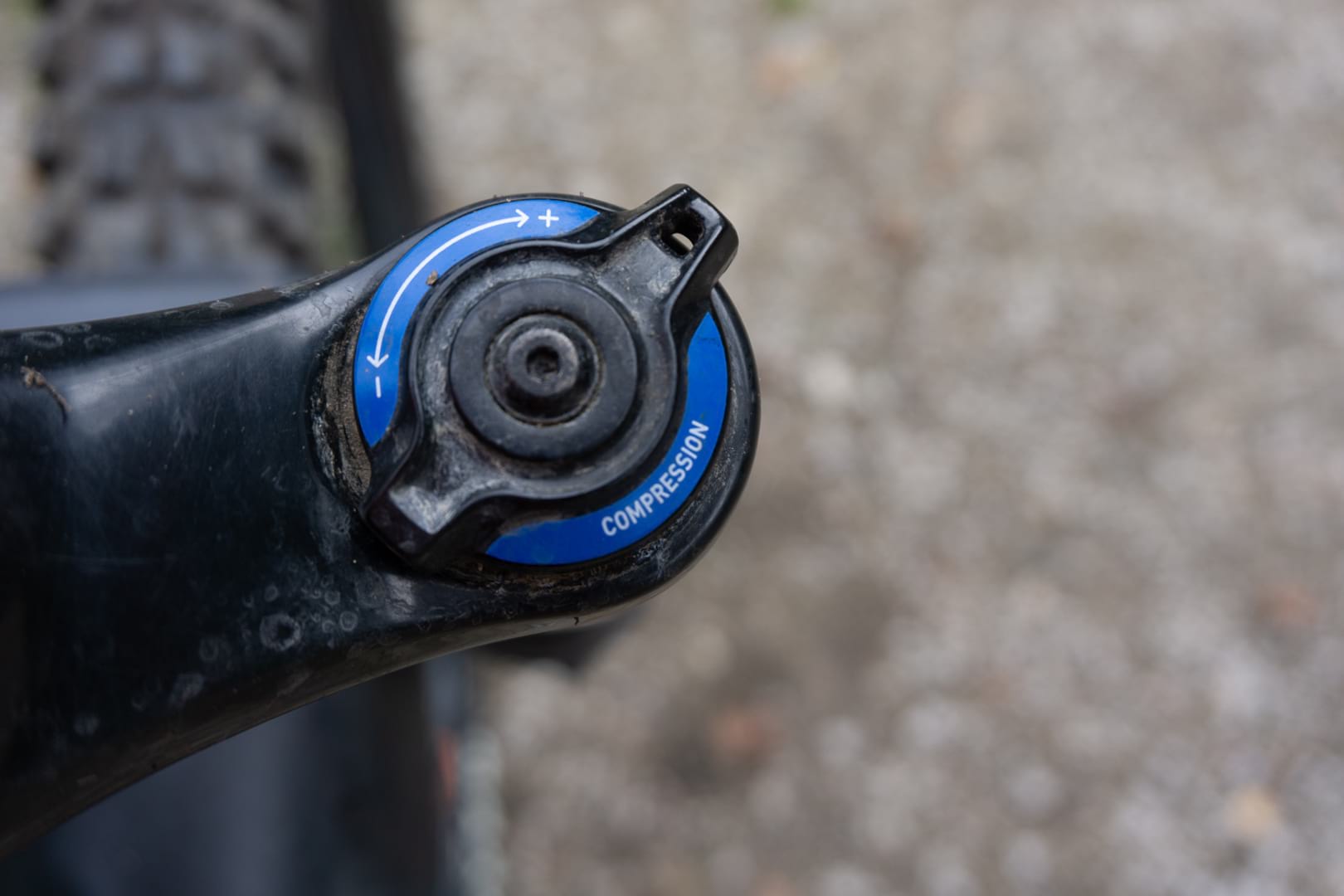
The 35mm stanchion Revelation fork is a huge improvement on its 32mm predecessors. However it also feels a bit oversprung, and certainly not as plush as the Yari forks I’ve spent time behind, even though it’s clearly cut from the same cloth. I ended up running them with three Bottomless Tokens at around 45 psi, which is a bit lower than recommended, and clicking the compression damping round a couple of notches to add support, which seemed to get them behaving nicely. The fork’s standard 51mm offset also doesn’t help on really steep stuff, and I had a couple of moments when it felt like the front was trying to tuck under. It also comes with the old style Maxle, which had a tendency to fail at the thin aluminium collar. But even with these niggles, having a burly unit up front really extends the range of what you can confidently ride. The wide rims plump up the tyres to deliver tonnes of grip, and the bike as a whole feels ready to take on anything.
Longevity
I managed to hang on to the Satori for a whole summer, using it as my main bike for several months, and it held up very well. The frame developed some creaks after a few rides, which were banished by snugging up all the pivot bolts, a task which required several different sizes of hex wrench. I also cracked one of the bar endplugs in half, not usually a hard thing to replace, but on the Satori they’re bonded to the rubber and can’t be swapped separately. Shame, as the grips are great otherwise. Other than that, and the aforementioned issues with the rear tyre, everything has behaved itself. I’m still even on the original brake pads, although that’s probably down to the freakishly dry weather as much as anything.
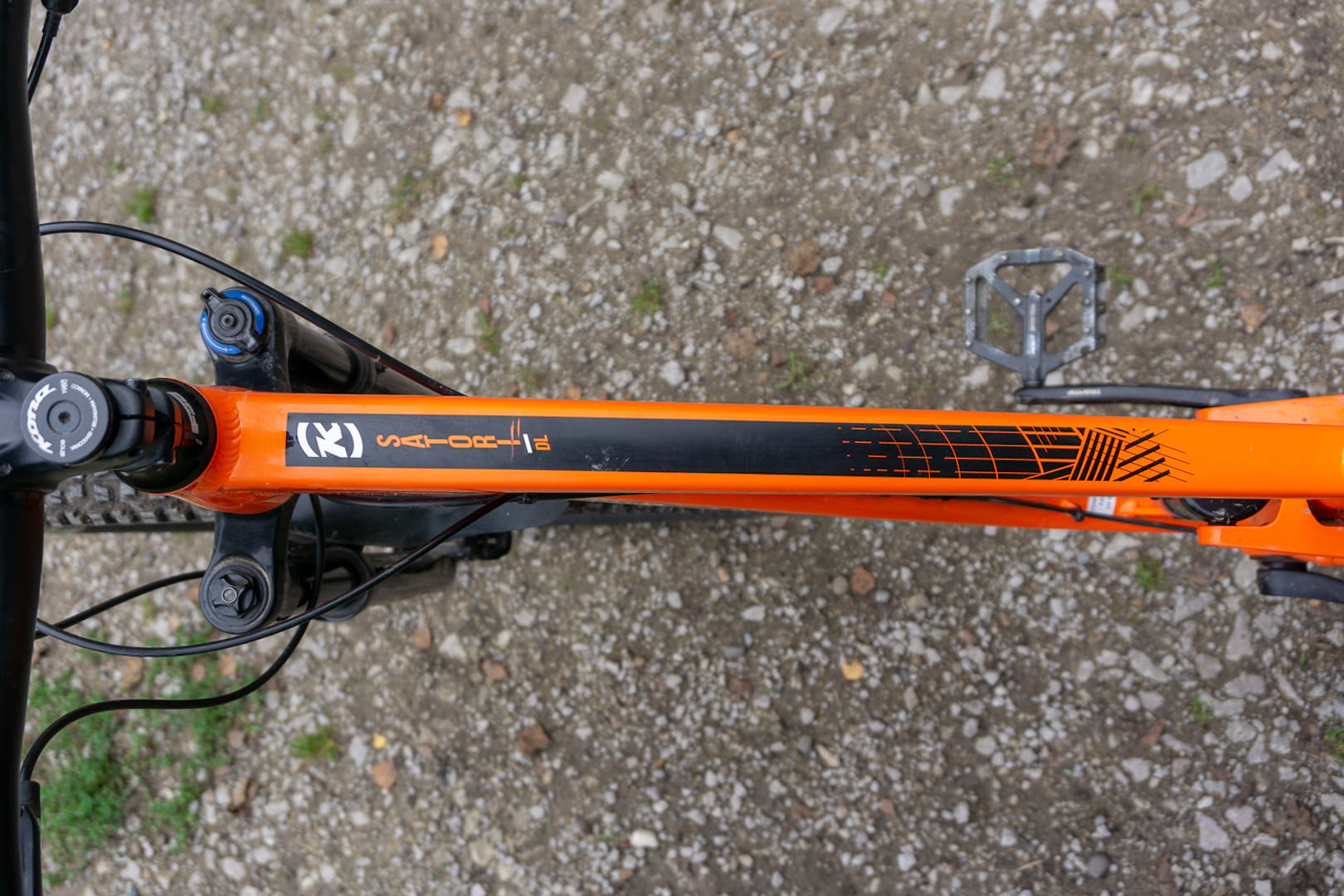
Three Things That Could Be Improved
- A seatpost with an under-bar lever and more drop would do the bike justice.
- The back tyre isn’t up to Maxxis’ usual standards.
- The odd geometry can make the bike feel cramped, at least until you stand up.
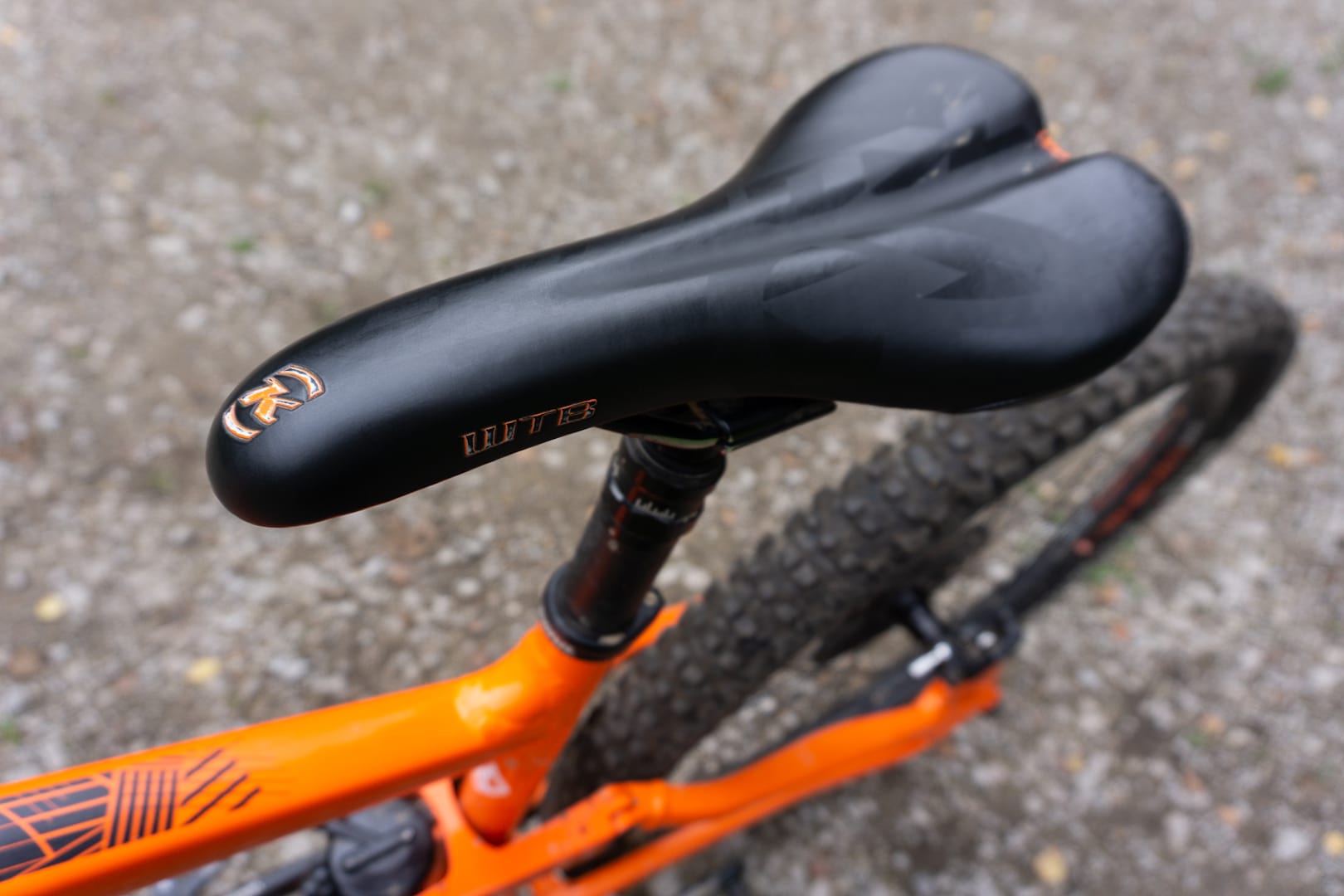
Three Things I Loved
- It’s a burly 29er that’ll also cover the miles.
- The freakish seat angle makes it great at technical climbs.
- The wheels are surprisingly good, especially the wide, tough rims.
Overall
Kona has been doing exciting things with bike geometry longer than many, and they could have played it safe with the Satori. Instead it’s a difficult bike to pigeonhole. It climbs extremely well, but it’s carrying a fair bit of heft at over 31lbs in total. It’ll tackle full-on terrain, but the short dropper post, harsh suspension, and a fork with a slightly budget feel force you to rein it in when things are getting really fun. And, drivetrain aside, its spec is underwhelming for an aluminium bike that costs north of three grand. If I was building up this bike from scratch, I’d probably compromise on the gear range if it meant I could give the bike a slightly better fork and dropper post.
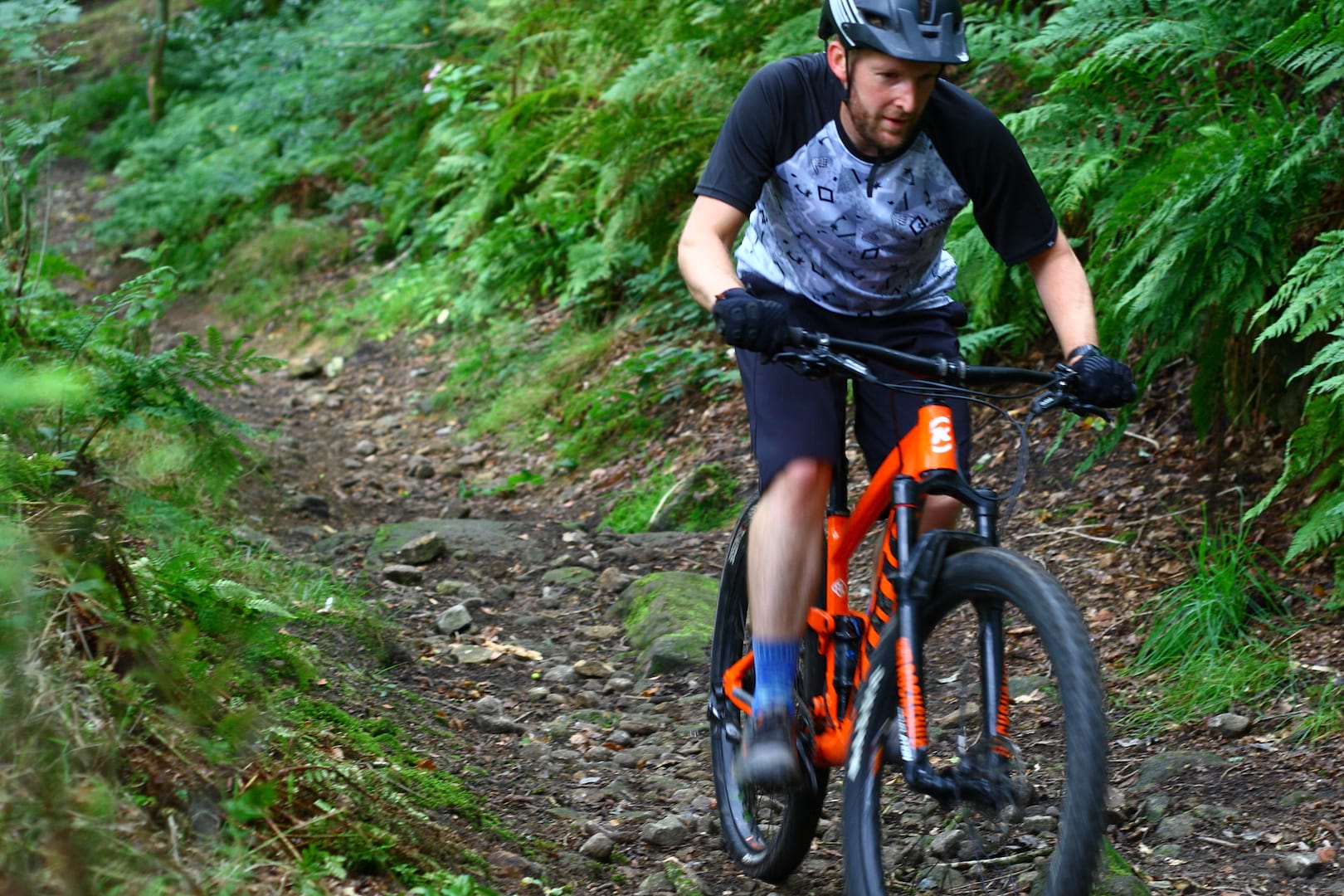
Having said all that, I’ve had some great rides on the Satori, particularly long days in big hills. When some bikes would have sucked the life out of my legs within a few hours, the Kona seems to want to keep on going. With its low gearing and nimble climbing, it’s way more fun to ride uphill than most bikes of similar burliness. But with its odd sizing, uninspiring spec, and slightly underwhelming downhill performance, I can easily see it dropping out of the line up again – until the next reinvention.
